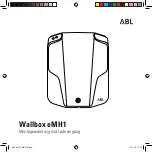
•
E-350/E-450 Dual Rear Wheel
The fluid level will drop slowly as the brakes wear, and will rise when the
brake components are replaced. Fluid levels between the MIN and MAX
lines are within the normal operating range; there is no need to add
fluid. If the fluid levels are outside of the normal operating range, the
performance of the system could be compromised; seek service from
your authorized dealer immediately.
DRIVELINE UNIVERSAL JOINT AND SLIP YOKE
Your vehicle may be equipped with universal joints that require
lubrication. Refer to the
scheduled maintenance information
for
maintenance intervals. If the original universal joints are replaced with
universal joints equipped with grease fittings, lubrication will also be
necessary.
TRANSMISSION FLUID
Checking automatic transmission fluid (if equipped)
Refer to your
scheduled maintenance information
for scheduled
intervals for fluid checks and changes. Your transmission does not
consume fluid. However, the fluid level should be checked if the
transmission is not working properly, i.e., if the transmission slips or
shifts slowly or if you notice some sign of fluid leakage.
Automatic transmission fluid expands when warmed. To obtain an
accurate fluid check, drive the vehicle until it is at normal operating
temperature (approximately 20 miles [30 km]). If your vehicle has been
operated for an extended period at high speeds, in city traffic during hot
weather or pulling a trailer, the vehicle should be turned off for about
30 minutes to allow fluid to cool before checking.
1. Drive the vehicle 20 miles (30 km) or until it reaches normal operating
temperature.
2. Park the vehicle on a level surface and engage the parking brake.
Maintenance and Specifications
288
2011 Econoline
(eco)
Owners Guide, 3rd Printing
USA
(fus)
















































